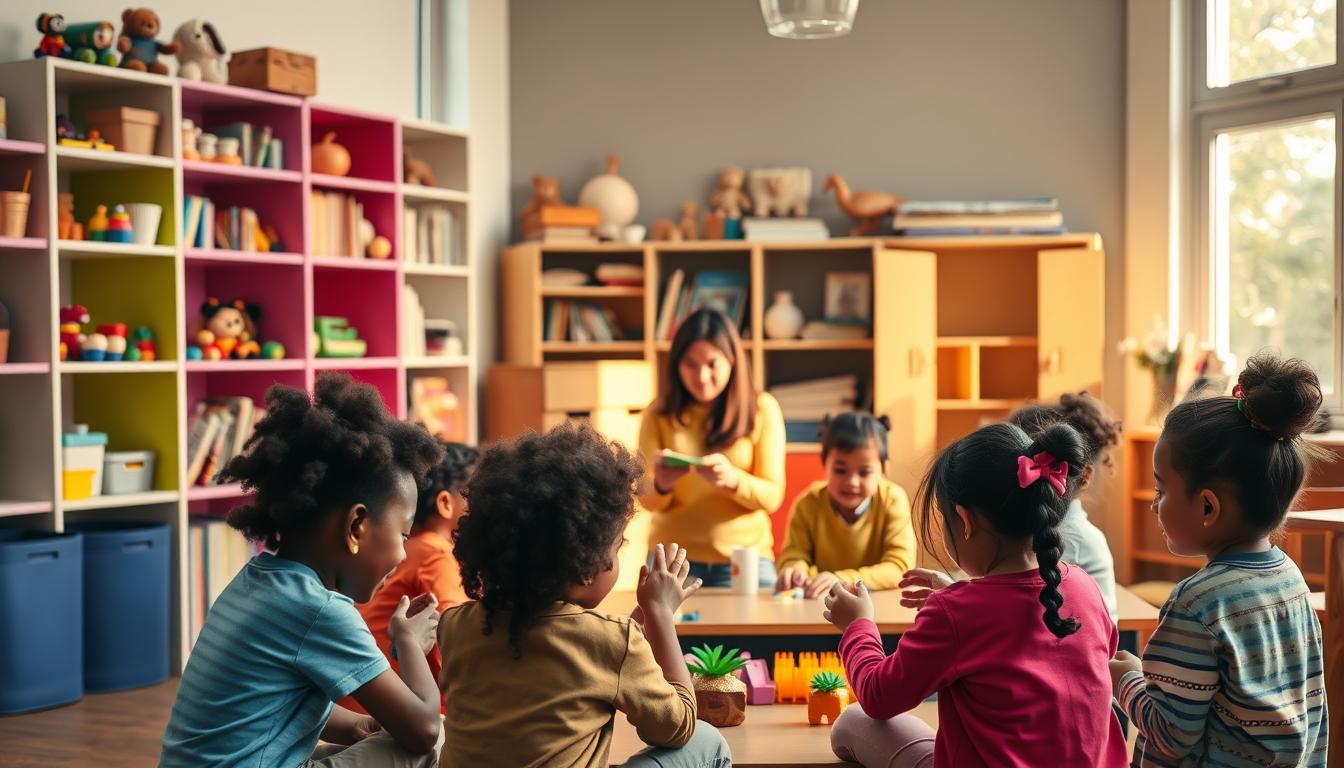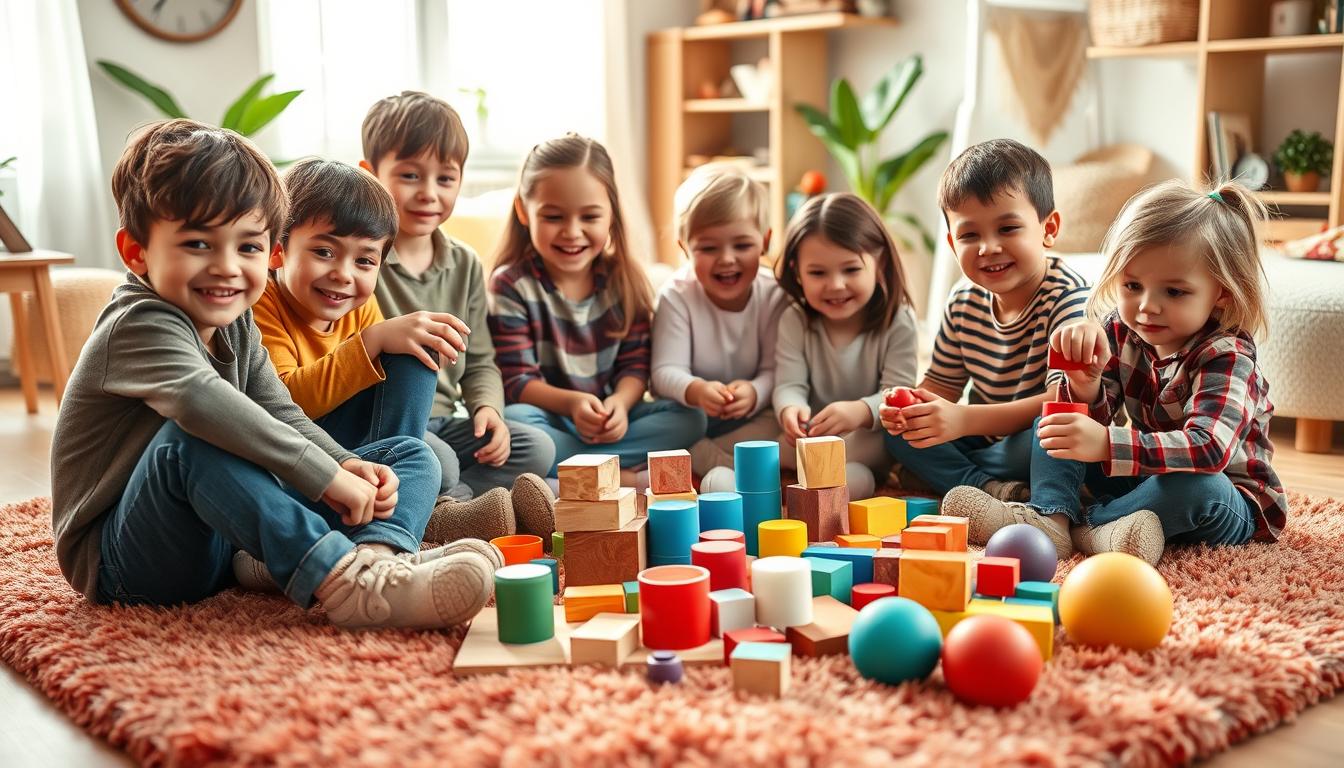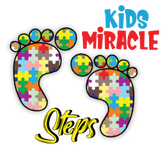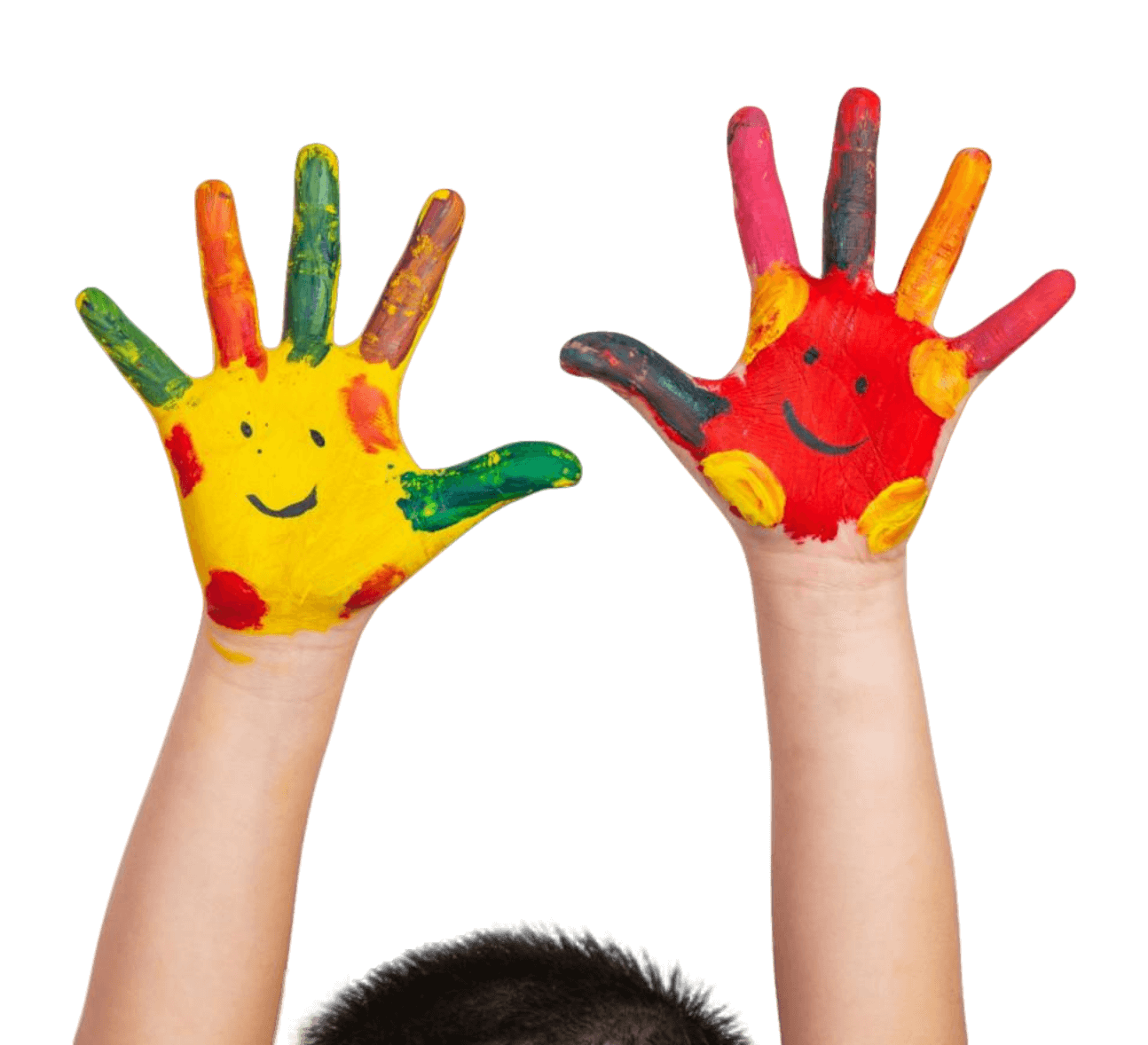Ever thought how a kitchen spoon or a favorite toy could improve your child’s speech? Multi-sensory speech sessions therapy uses everyday items to help children with special needs. This method works wonders in speech sessions for kids.
We can turn things like cups and blocks into tools for speech therapy. This makes learning not just better, but also more enjoyable. This article will show you new ways and tips to make speech therapy better. Your child will learn in a caring and fun way.
Introduction to Multi-sensory Speech Sessions
Multi-sensory speech sessions are a fun way to help kids learn to communicate better. They use all the senses to help with learning. This makes it easier for kids, especially those with special needs, to join in and learn. We mix sight, sound, touch, and movement in our sessions. This helps create a better place for kids to learn from.
Kids understand things better when they can see, hear, and touch what they’re learning. We don’t just focus on one way of learning. Instead, we mix them up. This helps kids use what they’re good at and get better at what they’re not. For example, using bright pictures, things they can feel, and fun activities can make learning to speak more fun.
- Auditory: Incorporating songs, rhymes, and verbal instructions.
- Visual: Using pictures, visual schedules, and sign language.
- Tactile: Engaging with textured materials and hands-on activities.
- Kinesthetic: Implementing movement-based tasks such as dance or role-play.
Understanding more about how our senses work together shows us how valuable it is. It really makes learning to speak better more fun and useful. By using these ideas every day, parents and therapists can help all kinds of kids learn better.
Benefits of Using Sensory Bins
Sensory bins in speech therapy are getting a lot of positive attention. They offer kids a mix of textures, sounds, and scents. This mix helps with sensory processing, making therapy sessions more engaging and effective. Every item in these bins is picked to stimulate senses and keep kids focused in a helpful way.
Using sensory bins has many benefits. Kids pay better attention and stay focused longer. This is because the bins’ tactile nature is more engaging than usual methods. Kids also get better at using words as they talk about the bin’s contents. This helps build their language skills in a natural and fun way.
| Benefit | Description |
|---|---|
| Enhanced Sensory Processing | Children learn to process different types of sensory input more effectively, leading to improved overall sensory integration. |
| Improved Focus | The tactile engagement from the bins helps sustain a child’s attention span during therapy sessions. |
| Vocabulary Expansion | Interacting with various objects encourages children to name and describe them, bolstering their language skills. |
| Social Interaction | Group activities using sensory bins foster communication and cooperation among peers. |
Sensory play also plays a key role in brain development. Different textures and shapes activate brain pathways. This boosts memory and thinking skills. So, using sensory bins in therapy does more than help now. It prepares kids for better growth and learning in the future.
Creative Ways to Use Everyday Objects
Everyday objects can make speech therapy fun and engaging. Straws, cotton balls, and paper clips offer diverse ways to learn. They help with multi-sensory learning in therapy sessions.

Mini objects, for instance, are great for saying words clearly. They can go in sensory bins for a fun, hands-on experience. The Action Bag is another cool trick. It has kids describing what they might do with an item, helping them speak more freely.
Stories like “The Very Hungry Caterpillar” and “Goodnight Moon” are perfect for teaching new words. They use everyday items to spark engaging conversations, making new words exciting.
Games like HedBanz make kids guess words from clues, which builds their descriptive skills. The Pie Face Game brings in laughter, helping with more easy-going speech. Spot It! is a cost-friendly game that’s quick to play and helps a lot in therapy.
Creative use of everyday objects makes therapy more fun and enriches learning by using our senses. These tools greatly improve children’s enthusiasm and their progress in therapy.
- Miniatures: Tiny objects for articulation practice.
- Action Bag: Using a bag with objects for creative actions.
- Meet the Words: Learning new vocabulary through conversation.
- HedBanz: Fun word-guessing game.
- Pie Face Game: Adding unexpected fun to the classroom.
- Spot It! Game: An affordable therapy tool.
- Books: Using popular children’s books for therapy.
Incorporating Crafts in Speech Therapy
Craft activities add a whole lot of fun to learning speech. They involve actions like cutting and gluing, offering hands-on fun. These activities mix touch and sight in a way that helps kids learn to speak better. We’ll look into why crafts in speech therapy are so great.
- Tactile Learning: Crafts are hands-on. Kids can touch and hold things, which helps them learn and remember new words.
- Visual Stimuli: Crafts use bright colors and shapes to grab kids’ attention. This makes learning more engaging and helps them link sounds to objects.
- Contextual Learning: Making things gives words a real-world context. For instance, making a paper flower can teach words like “petal” and “bloom.”
- Motivation and Fun: Fun craft activities encourage kids to join in. When kids enjoy the tasks, they’re more eager to talk and practice speaking.
Crafts also help kids learn to work together with friends or family. This improves their talking skills and boosts their confidence. By adding these fun activities, we help kids learn to speak better. And, we make their learning journey enjoyable and memorable.
Engaging Children with Special Needs
Patience and creativity are key in speech therapy for special needs kids. A nurturing setting engages these children well. It’s important to understand their unique needs for effective, entertaining multi-sensory sessions.
Adding sensory activities can both soothe and excite the kids. Things like textured objects make sessions interactive. Simple acts, like sorting colorful beads, grab their interest and set the stage for complex speech tasks.
Creative use of everyday items can spice up sessions and connect with kids. For instance, rhythm exercises with spoons and cups turn them into fun musical tools. This makes kids eager to join in.
Visual props are also crucial. Flashcards and animations grab their attention, making learning more dynamic. Crafts like clay modeling or painting help with both motor skills and language.
Interactive games are great for special needs kids. They make learning speech skills fun, without pressure. Modifying board games to include speech goals teaches and entertains at the same time.
We offer a summary of some activities and their benefits below:
| Activity | Benefits |
|---|---|
| Sorting Beads | Improves fine motor skills and color recognition |
| Rhythm Exercises with Household Items | Enhances auditory discrimination and coordination |
| Interactive Flashcards | Boosts visual engagement and vocabulary |
| Crafts (Clay Modeling, Painting) | Encourages creativity and language development |
| Modified Board Games | Develops social skills and speech patterns |
Teaching Spatial Concepts Through Play
Teaching kids about space through play is super effective in speech therapy. By using fun play lessons, we explain important words like “over,” “under,” “near,” and “far.” Kids get to use things from around the home. This makes learning these words fun and easy to understand.
Making an obstacle course out of things like chairs and blankets is great. It helps kids learn about “under” and “through.” Asking a child to put a toy “on” a table or “under” a chair helps them get how these words are used in real life.

Try setting up a treasure hunt. It can lead kids to find things “near” the couch or “between” bookshelves. This mixes learning with fun games. It helps kids pick up words describing where things are without them even noticing.
| Activity | Spatial Terms | Benefits |
|---|---|---|
| Obstacle Course | Over, Under, Through | Improves gross motor skills; enhances comprehension |
| Treasure Hunt | Near, Between, Behind | Boosts problem-solving skills; encourages exploration |
| Sorting Games | In, Out, On | Develops fine motor skills; fosters categorization ability |
Through fun activities, kids not only learn about space but also improve other skills. Play makes learning exciting and sticks with them, sparking curiosity for life.
Practical Tips for Clinicians and Parents
We need to work together for successful speech sessions. This makes therapy in homes and clinics better and more fun.
It’s important to be consistent. Short, daily sessions work better than long, rare ones. Here’s what to do:
- Choose a specific time for home therapy every day.
- Make sure there are no distractions around.
- Use common objects to make the setting familiar and comfy.
We must match the child’s learning speed. Every kid is different and needs their own approach. Try out various methods and change them as needed to fit your child.
Clinicians:
| Recommendation | Action |
|---|---|
| Collaborate with Parents | Keep parents updated and involved in the therapy. |
| Personalize Sessions | Engage the child with things they like. |
| Provide Resources | Offer tips for therapy that parents can do at home. |
Parents:
- Stay positive and celebrate every little success.
- Use visual aids and multi-sensory tools for better learning.
- Regularly talk to your child’s clinician to keep things consistent.
By using these tips, clinicians and parents can help kids a lot. Together, we can improve their speech and boost their confidence.
Multi-sensory Speech Sessions: Research and Statistics
In the realm of speech therapy, multi-sensory sessions are getting a lot of attention. These sessions help kids engage more and actually get better at communicating. Studies have shown that kids with special needs really benefit from these sessions. They make big strides in how well they can talk and use body language.
A study by the American Speech-Language-Hearing Association (ASHA) found an impressive result. 85% of kids with autism got better at communicating after just six months of multi-sensory therapy. This matches up with other studies too. They all say that mixing senses in therapy helps a lot.
Take a look at this table. It shows some striking stats from various studies about multi-sensory speech therapy. It compares traditional methods to multi-sensory ones, showing how much better the latter is.
| Study | Participants | Duration | Improvement Rate (Traditional) | Improvement Rate (Multi-sensory) |
|---|---|---|---|---|
| ASHA 2022 | 120 children | 6 months | 45% | 85% |
| Journal of Speech-Language Pathology 2020 | 80 children | 4 months | 50% | 75% |
| National Institute of Health 2018 | 100 children | 1 year | 60% | 90% |
The numbers speak for themselves. Multi-sensory speech sessions really boost therapy success. They make things better faster for kids who need help communicating. It’s clear that using different senses in therapy is a huge help.
Conclusion
As we wrap up, we see the big impact of multi-sensory speech sessions for kids with special needs. Using everyday objects makes learning not only fun but also easy and practical. This approach is a game-changer for both therapists and parents. It proves how creativity can transform speech therapy.
We’ve looked at different ways to make speech therapy engaging. From sensory activities to teaching space through play, each method is about fun learning. These strategies help kids make steady progress in speech therapy. They give you the tools to support your child’s learning journey.
Let’s remember, moving forward in speech therapy can be positive and not overwhelming. With these strategies, you can build a learning space that meets your child’s needs. If you need more help, reaching out to Kids Miracle Steps is a good step. Together, we can help our kids grow and thrive in a supportive community.






